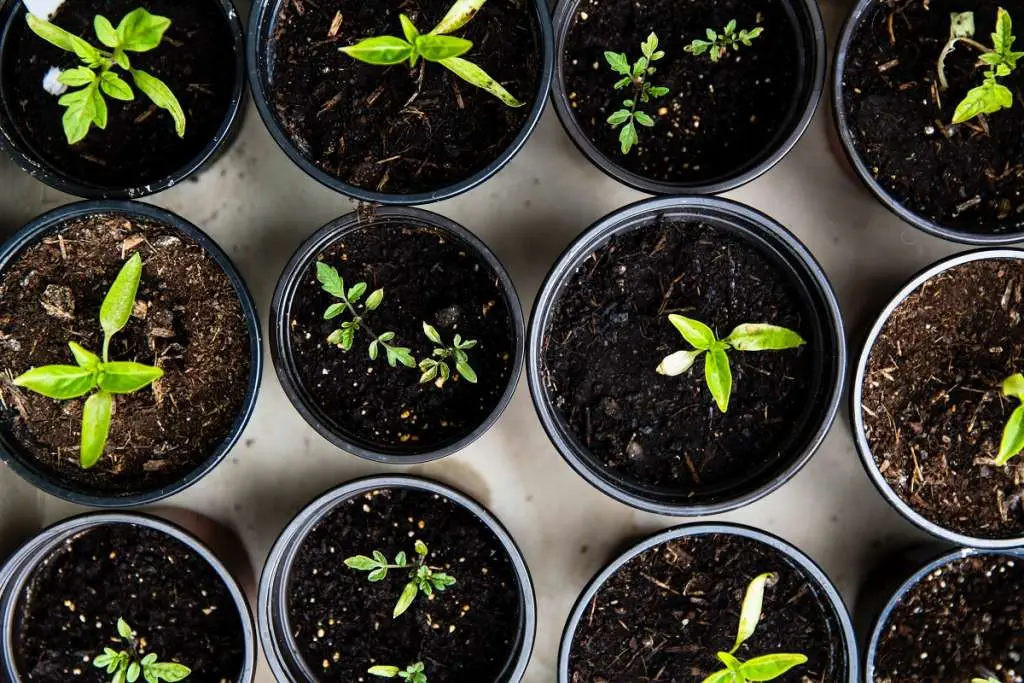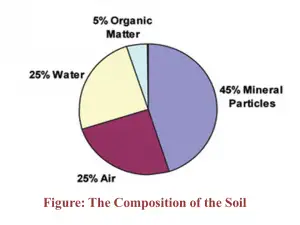Definition of Soil
The soil is a natural medium that acts as a basement for all other materials and living entities. Normally the definition of soil has a variation person to person according to the point of view of their perspective. The definition of soil to a farmer is not similar to the definition of soil to an engineer. However, the soil composition can also be understood from the definition of soil.

Two Definitions of Soil
According to Kellogg (1960),
“Soil is the collection of natural bodies occupying portions of the earth’s surface that support plants and that have properties due to the integrated effect of climate and living matter, acting upon parent material, as conditioned by relief, over periods of time (Hartemink, 2016).”
According to Hilgard (1892),
“Soil is more or less a loose & friable material in which plants, by means of their roots find a foothold for nourishment as well as for other conditions of growth.”
Soil Composition
The soil is a combination of different types of minerals, organic matter, different gases together with the water portion. Because of this, soil can be termed as a heterogeneous body. The percentage of different compounds of soil are given below:
1. Soil Organic Matter
A very small amount of organic substance can be found in soil. The source of organic matter is almost plant and animal (Kheyrodin, 2014). Based on the decomposition stage, there are three types of organic matter:
a. Undecomposed organic matter
b. Partially decomposed organic matter
c. Completely decomposed organic matter

2. Minerals
From the definition of the soil of some Soil Scientists, we can understand that mineral a main element of the soil. Minerals are solid components and consist of atoms having good order and a regular arrangement. It is naturally occurring, homogeneous elements or inorganic substances that have a fixed chemical composition and a distinct geometric pattern. Example: Olivine and Feldspar.
Check out another article: 5 Causes and 17 Effects of Riverbank Erosion in Bangladesh
3. Liquid portion
The percentage of the solid phase is about 25%. The soil act as a reservoir for supplying water to plants for their growth. Different soil nutrients can be dissolved in this liquid phase which can also be used for plant growth.
4. Gaseous portion
The air-filled pores constituents the gaseous phase of the soil system and depends on that of the liquid phase. The Nitrogen and Oxygen contents of soil air are almost the atmospheric air but the concentration of Carbon dioxide is much higher. The higher amount of Carbon dioxide is toxic to plant growth. There is a huge amount of microbes in the soil from where the Carbon dioxide is released to the soil.
Conclusion
Eventually, the definition of soil expresses the main concept of soil composition. The Soil is a natural body which has a great influence on every entity. The soil composition affects plant growth. However, we should be careful to conserve the soil. We have to prevent soil degradation.
References:
- Hartemink, A. E. (2016). The definition of soil since the early 1800s. Advances in Agronomy (Vol. 137). Elsevier Inc. https://doi.org/10.1016/bs.agron.2015.12.001.
- Kheyrodin, H. (2014). Important of soil quality and soil agriculture indicators. Academia Journal of Agricultural Research, 2(11), 231–238.
Author:
Md. Nayem Hasan Munna
Soil and Environmental Sciences,
The University of Barishal,
Barishal, Bangladesh.
Email: [email protected]
Website: www.nayemhasanmunna.info
Youtube: Md. Nayem Hasan Munna